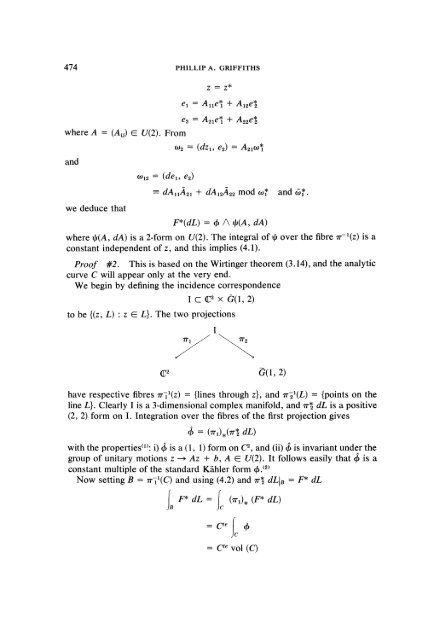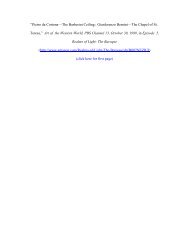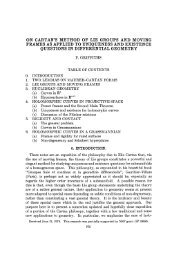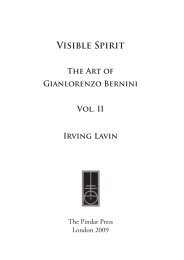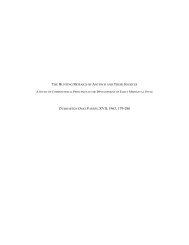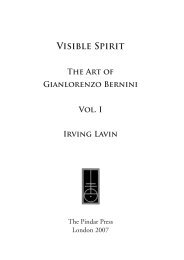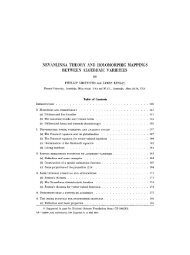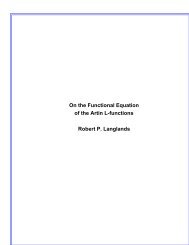View PDF - Project Euclid
View PDF - Project Euclid
View PDF - Project Euclid
Create successful ePaper yourself
Turn your PDF publications into a flip-book with our unique Google optimized e-Paper software.
474 PHILLIP A. GRIFFITHS<br />
el<br />
Z.Z *<br />
where A (Ai)<br />
e2<br />
U(2). From<br />
and<br />
we deduce that<br />
(-012<br />
-<br />
0) (dZl, e) A21(o]<br />
(de1, e)<br />
=- dA 1121 dA 1222 mod o*<br />
F*(dL) dp / tO(A, dA)<br />
and &*.<br />
where tO(A, dA) is a 2-form on U(2). The integral of tO over the fibre 7r-l(z) is a<br />
constant independent of z, and this implies (4.1).<br />
Proof #2. This is based on the Wirtinger theorem (3.14), and the analytic<br />
curve C will appear only at the very end.<br />
We begin by defining the incidence correspondence<br />
IC 2 x (1,2)<br />
to be {(z, L) z L}. The two projections<br />
2<br />
7/’1<br />
I<br />
j 7"/" 2<br />
(1, 2)<br />
have respective fibres 7/’-l(z) {lines through z}, and zr-l(L) {points on the<br />
line L}. Clearly I is a 3-dimensional complex manifold, and zr dL is a positive<br />
(2, 2) form on I. Integration over the fibres of the first projection gives<br />
(’W1):(’W dL)<br />
with the properties (a)" C, i) ( is a (1, l) form on and (ii) d) is invariant under the<br />
group of unitary motions z --) Az + b, A U(2). It follows easily that ( is a<br />
constant multiple of the standard Kfihler form<br />
Now setting B T/"I(C) and using (4.2) and r dLIB F* dL<br />
IB F* dL Ic (7rl), (F* dL)<br />
C t’ vol (C)


